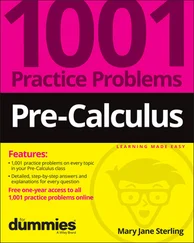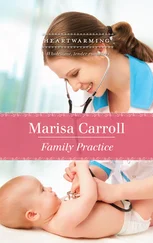1 ...8 9 10 12 13 14 ...18 Person is very resilient, with a moderately high degree of psychological adjustment in dealing with critical life events and major life stressors (e.g., job loss, the death of a family member, divorce, personal illness, injury, disease, disability). Person takes therapeutic responsibility for any mental health symptoms and conditions, although they do not respond as promptly as individuals at Level 5. Person demonstrates positive optimism and a very good balance of mood, emotion, affect, and rational thinking. Person can handle daily life stressors with very good coping and resiliency skills. Person transitions well through the phases of a pandemic disaster, cultivating new meaning, personal growth, hardiness, and self-care, although not as skillfully as Level 5 individuals.
Person has a well-balanced life and maintains a healthy routine of virus-related hygiene habits following public health guidelines. Person has respect for self and others concerning social distancing, stay-at-home orders, and other good virus hygiene. Person, however, makes some exceptions to good virus hygiene when interacting in public places. Person engages in regular exercise, has proper nutritional intake, demonstrates healthy patterns of sleep and rest, maintains virus-adjusted recreational activities, and exhibits very good overall daily functioning. Person is perceived by self and others to be highly focused, motivated, and goal oriented. They are observed by others taking personal responsibility for living in positive optimism, although they struggle slightly more than Level 5 individuals. Person is high in social-emotional intelligence, demonstrates very good interpersonal communication skills, demonstrates empathetic concern for others, is action oriented, is a contributor, and has a collectivist ideology as opposed to a self-absorbed lifestyle.
Person has very good functioning in a wide range of life areas, such as academics, job, career, and economic stability. Person exhibits very good social and familial connections. Person is self-motivated and engaged in clubs, organizations, religious/spiritual life, and recreational activities. Person has a very good balance of home, work, academics, and social life. Person exhibits very good adaptation and adjustment to a pandemic disaster despite any personal medical, physical, psychological, behavioral, financial, or occupational challenges or challenges with independent living, environmental functioning, and/or functional capacity.
Person is medically and functionally stable and can take care of any existing medical/physical health conditions. Regardless of illness, disease, or disability, Person takes personal responsibility for their medical, physical, behavioral, mental, and psychosocial health by using support systems, resources, and technology to live life in optimal wellness.
Level 3 = Good Resiliency
At Level 3, the person has good mental, behavioral, and psychosocial health. The individual has a rational and healthy respect for the seriousness, lethality, and consequences of a pandemic virus but does not live their life in fear of the virus. Thus, there is some minimization of the seriousness, lethality, and consequences of a pandemic virus. Individuals at Level 3 view good virus hygiene and adherence to public health guidelines as essential to the protection of themselves and others and get vaccinated. Level 3 persons may occasionally oppose wearing a mask, washing their hands, and keeping a social distance. Individuals at Level 3 may experience and react with irrational fear and anxiety; however, it is directed more toward their changing environment, which they do not understand or recognize because of a pandemic disaster. Individuals at Level 3 are more affected by trigger events (e.g., media reporting of positive COVID-19 cases, COVID-related illnesses and deaths, school and workplace closures) and form their pandemic ideology based on events that may or may not directly impact their lives. Clinically significant psychological/emotional symptoms and conditions are dealt with in a therapeutic manner but may meet with initial resistance that delays any therapeutic interventions. The individual exhibits stress-hardy behaviors but with a delayed response. It may take them longer to bounce back from adversity compared to individuals at Level 4. Individuals at Level 3 somewhat endorse public health principles, practices, guidelines, and government mandates associated with a pandemic disaster. They recognize their importance but do not direct their lives by such public health guidance. They view good virus hygiene and adherence to public health guidelines as nonessential to the protection of themselves and others. Thus, persons at Level 3 take slightly more virus hygiene risks than persons at Level 4. Individuals at Level 3 live life with good balance, adaptation, and adjustment in relation to their changing pandemic environment. The individual typically responds to the grief, loss, and extraordinary stressful and/or traumatic events associated with a pandemic virus by focusing their thoughts, feelings, and cognitions internally. They balance the reality of a pandemic disaster with other life responsibilities and make choices to move forward, which leaves unfinished business. The person’s overall mental and physical well-being is demonstrated by consistent attempts to achieve good wellness and resiliency, although not to the same degree as individuals functioning at Level 4. Persons at Level 3 find some meaning and relief regarding their life and others in their environment amid a pandemic disaster. Although adjustment and adaptation to the overall effects of a pandemic virus are not as seamless as in individuals at Level 4, Level 3 individuals recognize how to correct the path forward to overall health and well-being. The mental, behavioral, psychosocial, and medical/physical health of the individual at Level 3 is demonstrated by the following.
Person is resilient, with a moderate degree of psychological adjustment in dealing with critical life events and major life stressors (e.g., job loss, the death of a family member, divorce, personal illness, injury, disease, disability). Person delays taking therapeutic responsibility for any mental health symptoms and conditions, and they do not respond as promptly as individuals at Level 4. Person demonstrates positive optimism and a good balance of mood, emotion, affect, and rational thinking, but not to the same degree as persons at Level 4. Person can handle daily life stressors with good coping and resiliency skills. Person transitions adequately through the phases of a pandemic disaster, cultivating somewhat new meaning, personal growth, hardiness, and self-care, although not as skillfully as Level 4 individuals.
Person has a well-balanced life and maintains a somewhat healthy routine of virus-related hygiene habits, occasionally following public health guidelines. Person has respect for self and others concerning social distancing, stay-at-home orders, and other good virus hygiene but makes some exceptions to good virus hygiene when interacting in public places. Person engages in exercise but on an irregular basis, has somewhat good nutritional intake, struggles at times with healthy patterns of sleep and rest, maintains virus-adjusted recreational activities, and exhibits good overall daily functioning. Person is perceived by self and others to be focused, motivated, and goal oriented. They are observed by others taking personal responsibility for living in positive optimism, although they struggle more than Level 4 individuals. Person demonstrates good interpersonal communication skills. They exhibit empathetic concern for others sometimes. They are somewhat action oriented, are somewhat a contributor, but have a defined independent ideology as opposed to a collectivist lifestyle.
Читать дальше












